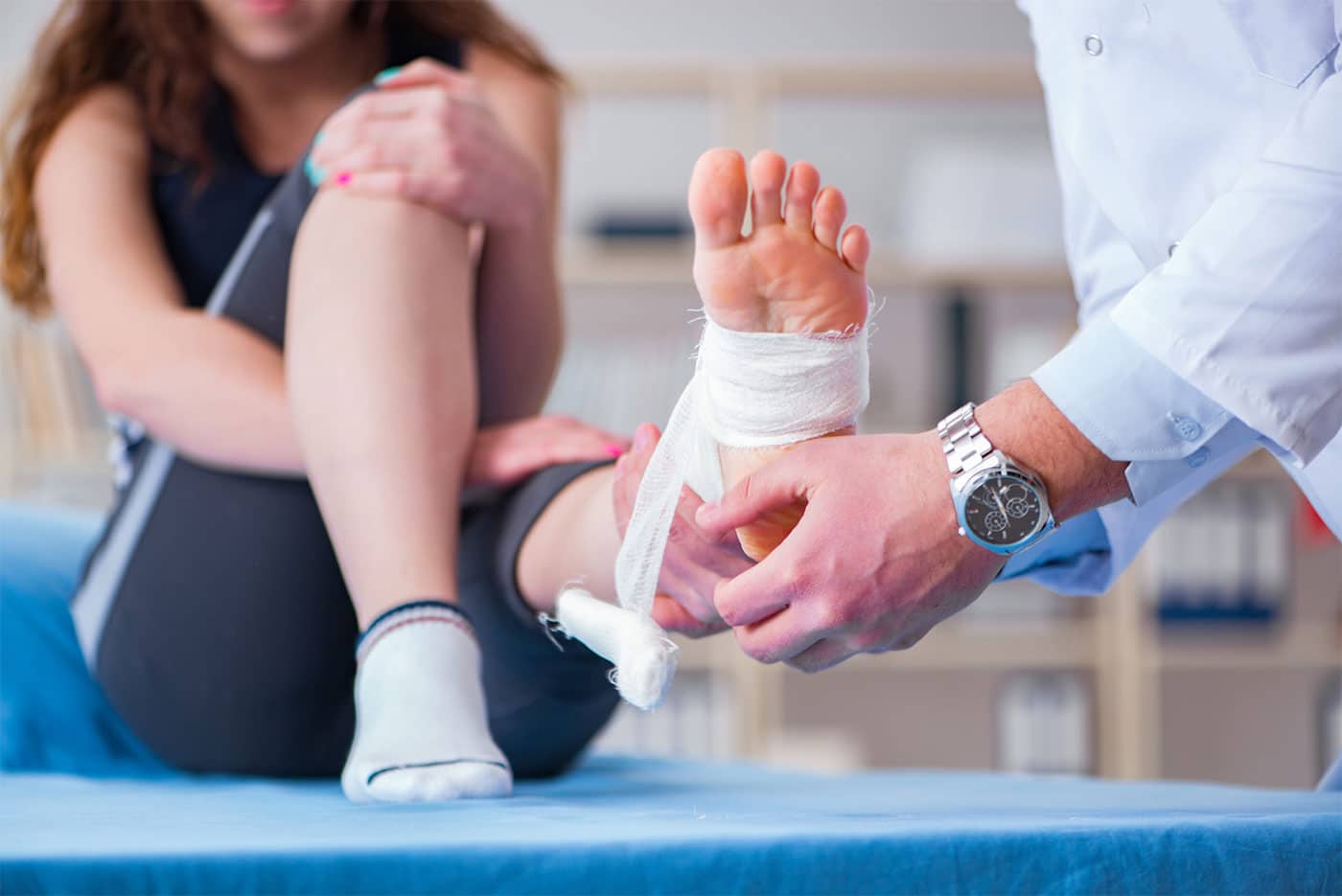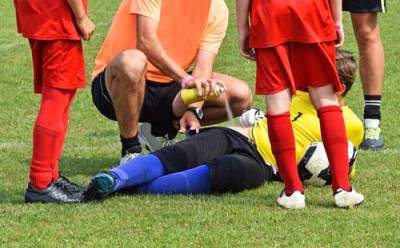The monsoon season brings welcome relief from the summer heat, but for athletes and fitness enthusiasts, it also brings a higher risk of sports injuries. Wet grounds, slippery roads, and humid conditions increase the chances of sprains, strains, and more serious joint injuries. If you’re continuing your exercise routine or playing sports during this season, you need to be more mindful of how you train and protect your body.
This blog offers practical orthopedic tips to help you stay active and injury-free during the rainy season. You’ll learn how to avoid common injuries, choose the right gear, warm up properly, and know when to seek help. These simple but essential tips will help you maintain your performance without compromising your safety.
Understand the Risks of Monsoon Sports Injuries

The combination of wet surfaces and reduced visibility creates an ideal setting for injuries. Some of the most common injuries during monsoon include:
- Ankle sprains from slipping on muddy or wet ground
- Knee injuries like ligament tears due to unstable terrain
- Muscle strains from improper warm-up in cooler, damp conditions
- Back pain caused by poor posture during indoor workouts on hard surfaces
You may also experience slower recovery due to changes in temperature and humidity, which can impact muscle flexibility and joint function.
Ask yourself: Are you adjusting your routine to match the season, or are you pushing through without considering the risks?
Choose the Right Footwear and Clothing
The right gear can make a huge difference during monsoon workouts. Your shoes and clothing should help reduce your risk of slipping and injury.
- Wear anti-skid shoes with good grip and ankle support.
- Avoid cotton clothing which absorbs water and becomes heavy. Use quick-dry fabrics.
- Choose full-sleeve clothing to protect against infections if you’re training outdoors.
- Replace worn-out footwear—even minor wear on the sole can reduce grip.
Proper footwear doesn’t just prevent slipping. It also helps maintain alignment and reduces stress on your knees and hips.
Warm Up More Thoroughly Than Usual
Your muscles and joints are stiffer during monsoon due to cooler temperatures and high humidity. That makes a proper warm-up more important than ever.
- Spend at least 10–15 minutes warming up before your activity.
- Include dynamic stretches like leg swings, arm circles, and bodyweight squats.
- Start with light cardio like skipping or brisk walking to increase blood flow.
- Avoid static stretching before workouts; save those for the cool-down.
Your body needs to feel ready. If your warm-up leaves you sweating lightly and moving easily, you’re on the right track.
Be Cautious with Outdoor Activities
Running on wet roads or playing on a damp field sounds fun, but it increases your chances of serious falls and impact injuries.
- Avoid waterlogged areas and uneven surfaces.
- Don’t play on synthetic turfs when wet—they become dangerously slippery.
- Shorten your outdoor sessions if it starts to rain.
- Always carry a dry towel and change clothes immediately after.
If outdoor activity is risky, shift to indoor workouts. Use home workout routines that require minimal equipment but offer balanced strength and mobility training.
Build Strength to Protect Joints

Strong muscles protect your joints. Focus on building strength around your knees, hips, shoulders, and back, which are commonly injured in sports.
- Include bodyweight exercises like squats, lunges, push-ups, and planks.
- Use resistance bands or light weights if training at home.
- Train your core muscles, as they stabilize the entire body.
- Prioritize eccentric exercises like slow, controlled lowering movements.
Don’t skip strength training even if you’re doing cardio or sports. A balanced workout routine is key to preventing injuries.
Don’t Ignore Pain or Discomfort
Pain is your body’s way of telling you that something is wrong. During monsoon, it’s easy to dismiss soreness as weather-related, but ignoring it can lead to serious issues.
- If you feel sharp pain, swelling, or loss of motion, stop immediately.
- Apply ice for 15 minutes to reduce inflammation.
- If pain persists beyond 48 hours, seek orthopedic consultation.
- Avoid self-medication and rest without knowing the cause.
Some injuries may seem minor at first but worsen if untreated. Don’t assume it will go away on its own—get professional help when needed.
Prioritize Recovery and Hydration
Monsoon humidity increases sweat loss even if it’s not visible. Many people also underestimate the importance of rest and recovery.
- Hydrate regularly with water or electrolyte drinks.
- Eat a balanced diet rich in anti-inflammatory foods like berries, leafy greens, and omega-3s.
- Get 7–8 hours of sleep each night to allow your muscles to recover.
- Add foam rolling or light stretching to your rest days.
If you’re fatigued, you’re more likely to lose coordination and injure yourself. Recovery is not optional—it’s essential.
Dr. Kunal Makhija: Your Trusted Orthopedic Surgeon
Dr. Kunal Makhija’s approach is centered on providing personalized, patient-focused care. With a passion for improving the lives of his patients, he offers the best possible treatments backed by years of experience. If you’re looking for an expert in robotic knee replacement surgery and hip replacement surgery, Dr. Kunal Makhija is the surgeon you can trust for top-quality care and optimal results.
Contact Dr. Kunal Makhija for Consultation
To schedule a consultation with Dr. Kunal Makhija, or if you have any questions about robotic knee or hip joint replacement surgery, feel free to reach out. His clinic in Panvel, Navi Mumbai, is equipped with advanced technology to provide the best treatment options available.
Clinic Address:
Patel Clinic and Orthopaedic Centre,
Kuber Apartment ‘A’, Joshi Ali Road,
Near City Police Station, Panvel, Navi Mumbai – 410206
Call Us:
+91 85913 99962
+91 87673 02801
Mail Us:
[email protected]
Frequently Asked Questions
1. Can I continue jogging in the rain if I wear proper shoes?
Yes, but only on non-slippery surfaces. Choose well-gripped shoes and avoid muddy or uneven tracks.
2. What should I do if I twist my ankle while playing?
Stop immediately, apply ice, elevate your leg, and consult an orthopedic specialist if swelling or pain continues.
3. Is it safe to do strength training at home during monsoon?
Absolutely. Focus on bodyweight exercises and light resistance to maintain joint health and muscle support.
4. How can I tell if joint pain is serious?
If the pain is persistent, sharp, or limits your movement, it’s best to get evaluated by an orthopedic doctor.
5. Do supplements help reduce injury risk?
Only when prescribed. A balanced diet usually provides what your body needs unless advised
Conclusion
Staying active during the monsoon is possible—you just need to be smart about it. Choose safe environments, wear the right gear, prepare your body before activity, and listen to what it tells you. The rainy season doesn’t have to derail your progress, but it demands more caution and discipline.
If you’re ever unsure about a pain or injury, don’t hesitate to consult an orthopedic specialist. Dr. Kunal Makhija’s expertise and patient-first care can guide you in the right direction for injury prevention and long-term joint health.
Keep moving, but move wisely.
